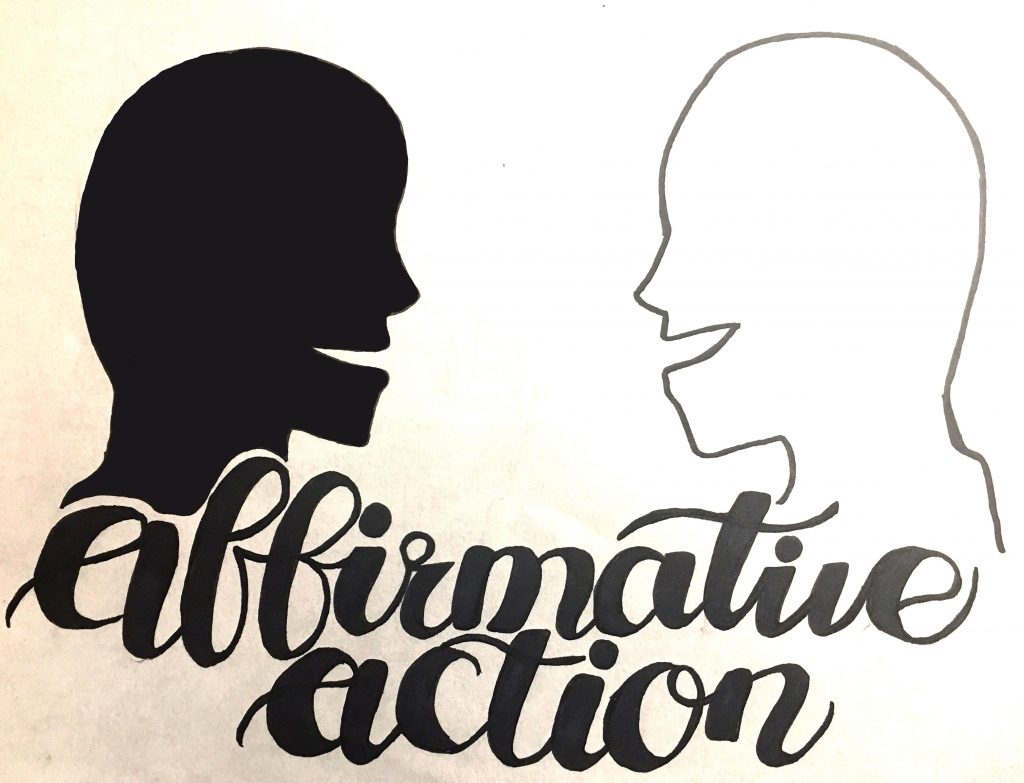Educational affirmative action seeks to achieve two noble goals: increasing diversity at colleges and increasing access to education for the disadvantaged. By noble, I am suggesting that these goals are irrefutably good, because access to education and diversity are inherently good. Exclusively race-based affirmative action can be dangerous and counter-productive.
This criticism focuses on exclusively race-based affirmative action: when colleges and universities consider race status as a positive or negative quality for admission. This concept is fundamentally wrong. If two people come from the same school and have demonstrated the same levels of intelligence and dedication, their races do not make either of them more admissible than the other. That situation is clear-cut, but the question of right or wrong is harder to answer in more complex situations. Consider two applicants whose families have similar incomes and who’ve had access to similar educational resources. Is a black or hispanic applicant more admissible than a white or Asian applicant because of their race? Race-based affirmative action would argue that certain races are more admissible, all else equal. The “all else equal” condition is where a wrench is thrown in the logic.
Some races have lower average incomes than others. However, this problem is not solved by giving admission preference to those races. If races with higher average incomes perform better on standardized tests because they have more preparatory resources, perhaps colleges should develop metrics that are less dependent upon resources. Changing standardized tests or providing resources to everyone would focus on eliminating disadvantages, rather than accounting for them. Recognizing disadvantages and trying to account for them does not fairly increase access to education for all, attempting to eliminate those disadvantages does.
Additionally, using race as a metric to determine educational resources is flawed. In 2017, the median household income for black people was $40,258. The median income for Asian households it was $81,331 (U.S. Census Bureau). Because affirmative action favors certain races, but still favors high standardized scores, black people that have access to educational resources benefit the most. Instead of benefitting those with limited access to educational resources, the system still favors those with access, but just diversifies the race of those it favors.
Diversity on campus is important, but can be reached in more impactful ways. Local outreach programs from colleges can often help to diversify qualified pools of applicants. This method also helps to focus on eliminating disadvantages instead of accounting for them while also diversifying the student body. Many colleges are in close proximity to urban areas, which provide a bounty of diverse students. Providing programs online and doing outreach programs to these cities increases diversity while attacking these disadvantages at their roots.
Affirmative action does an effective job of providing disadvantaged groups with heightened access to a college education, however, it acts as a band-aid that covers deeply-rooted problems that colleges could be addressing directly. Colleges should make efforts to help these disadvantaged groups perform better in school and better prepare for college admissions.
Author’s Note (7/27/2020): This article was written before the 2020 Black Lives Matter protests. These protests have taught me the difference between introducing equity and introducing justice. Affirmative action recognizes that the educational system fails minorities. By taking race into consideration when admitting students, colleges attempt to account for the disadvantages that the system have levied upon these students. This process attempts to achieve equity: recognizing disadvantages and applying aid to account for them. It is not enough. Higher learning institutions in the United States should not be satisfied with accepting the effects of racism in the elementary and middle school levels and then accounting for them in admissions. To achieve justice, colleges should lead reform and fight to eliminate the disadvantages that minority students face today, rather than account for them in their futures. Affirmative action shouldn’t be abolished without replacement. It should continue until we achieve justice, but cannot be the final solution to educational racism. Affirmative action is not an acceptable answer from colleges to racism; the only acceptable answer is a fight for justice.
Jason Theisen
Staff Writer
Graphic: Hannah Kim

